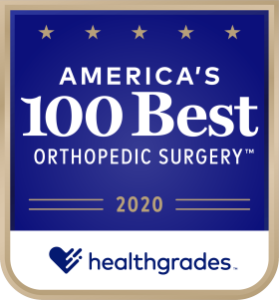While each knee surgery will have its own complications, arthroscopic surgery is generally the least invasive and requires minimal recovery time compared to other surgical methods. Arthroscopic surgery entails the creation of several small incisions into which the surgeon can insert a tube, fitted with a camera and a light, allowing them to observe the joint and perform surgical procedures without the large incisions needed for open surgery.
What Are Common Arthroscopic Surgeries?
Arthroscopic knee surgery is usually used to treat conditions that don’t respond to nonsurgical treatments like rest, physical therapy, medications, or cortisone injections.
The most common arthroscopic procedures for the knee include:
- Repair of a torn meniscus, partial meniscectomy (meniscus removal), or meniscus transplantation
- Reconstruction of a torn anterior cruciate ligament (ACL)
- Reconstruction of a torn posterior cruciate ligament (PCL)
- Removal of inflamed synovial tissue
- Trimming or reconstruction of damaged articular cartilage
- Removal of loose fragment of bone or cartilage
- Treatment of patella problems
- Treatment of knee sepsis
What Is Recovery Like For Arthroscopic Surgery?
As mentioned earlier, patients generally recover faster from knee arthroscopy surgeries than from traditional open knee surgeries. Though recovery is usually more straightforward for arthroscopic knee surgeries, it’s important to follow your doctor’s instructions for managing and preventing common postoperative problems and side effects.
These postoperative problems may include:
- Infection
- Blood clots
- Knee stiffness
- Accumulation of blood in tissue
- Bruising or swelling
Another postoperative discomfort is pain, though this is to be expected after surgery. While pain is a natural part of the  healing process, your doctor will help provide forms of pain relief post-surgery. These may include short-term medications like opioids, non-steroidal anti-inflammatory drugs (NSAIDs), or local anesthetics. These medications, especially opioids, however, should be used with caution as they can be addictive. Only use opioids as directed by your doctor and safely dispose of any remainder pills after your treatment course.
healing process, your doctor will help provide forms of pain relief post-surgery. These may include short-term medications like opioids, non-steroidal anti-inflammatory drugs (NSAIDs), or local anesthetics. These medications, especially opioids, however, should be used with caution as they can be addictive. Only use opioids as directed by your doctor and safely dispose of any remainder pills after your treatment course.
Your doctor will also likely advise you during this time to take additional care of your knee. After surgery, you should aim to keep your knee elevated for as long as possible to prevent pain and swelling. You should also keep the dressings around your knee clean and dry and only remove them when instructed to do so by your doctor. Your doctor may also recommend the use of crutches after surgery until it is safe to bear weight on the treated leg. At home exercises or physical therapy will also help you to restore motion and strength to your leg and knee muscles and further your recovery.
What Is Recovery Like For Arthroscopic Surgery?
While the recovery time will vary depending on the patient’s surgery and circumstances, arthroscopic surgeries are usually the least invasive and easiest to recover from. Many patients can return to most physical activities after 6-8 weeks and return to driving as soon as 1-3 weeks post-surgery. If you are experiencing knee pain and are concerned about surgery options, talk to an orthopedic surgeon to evaluate your condition, and find the best options to treat your pain.
Medical Disclaimer
The information in this article is provided for general information only. It is not intended as medical advice and should not be relied upon as a substitute for professional consultation with a healthcare provider familiar with your medical background and history.




